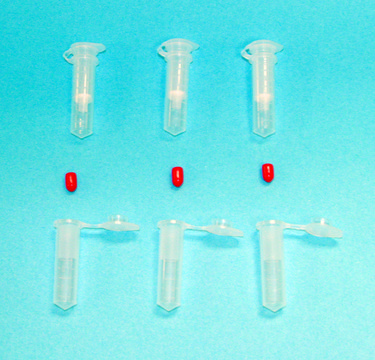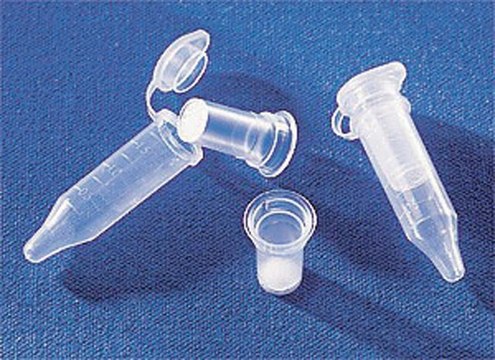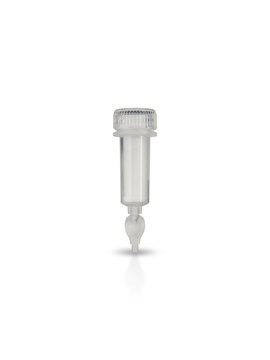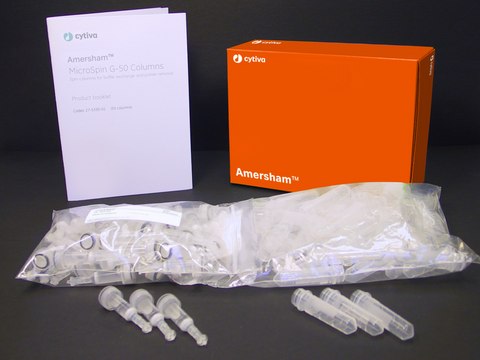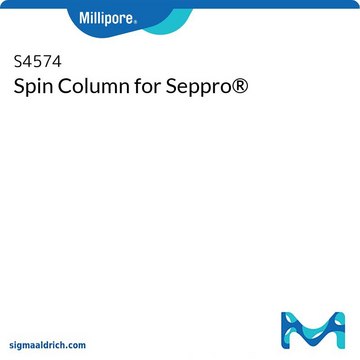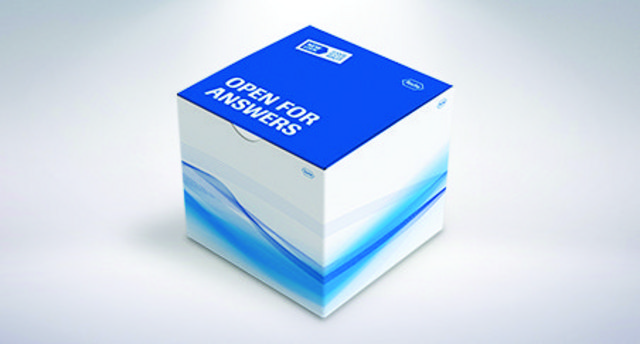11814397001
Roche
mini Quick Spin Oligo Columns
Synonym(s):
spin column
Sign Into View Organizational & Contract Pricing
All Photos(1)
About This Item
UNSPSC Code:
41115700
Recommended Products
packaging
pkg of 50 columns
manufacturer/tradename
Roche
shipped in
wet ice
storage temp.
2-8°C
General description
Ready-to-use, disposable, microfuge-compatible chromatography columns designed for the removal of unincorporated radiolabeled nucleotides from end-labeled oligonucleotides. The mini Quick Spin columns are designed for use with variable-speed, fixed-angle microcentrifuges.
Application
Mini quick spin oligo columns has been used to remove unincorporated radioactive nucleotides from the labeled oligo substrates.
Ready-to-use, disposable, microfuge-compatible columns designed for the removal of unincorporated radiolabeled nucleotides from end-labeled oligonucleotides. The mini Quick Spin columns are designed for use with variable-speed, fixed-angle microcentrifuges.
The mini Quick Spin columns are used for quick and complete removal of unincorporated nucleotides (e.g., radionucleotides or fluorescent dye-labeled dideoxy terminators) from labeled nucleic acids that have been prepared by nick translation, end labeling, polymerization, or other labeling techniques. Use the highly purified DNA in Southern blotting and sequencing.
Features and Benefits
Ready-to-use disposable columns designed to quickly and efficiently remove unincorporated nucleotides from freshly prepared radiolabeled oligonucleotides (≥8 bases). mini Quick Spin Columns can be used in any standard microcentrifuge.
b. Maximum retention of unincorporated nucleotides
c. Absence of DNases
- Save time and effort with ready-to-use columns with ready-to-use columns.
- Purify more nucleic acid in less time - process up to 50μl of sample in only 7 minutes.
- Minimize sample loss while maximizing yield - short and effective two-step procedure.
- Easy-to-use - column and cap allow for rapid resuspension of the gel matrix, and the bottom tip can be quickly snapped off.
- Ensure optimal performance and reproducibility with quality tested columns:
b. Maximum retention of unincorporated nucleotides
c. Absence of DNases
Packaging
Pre-packed, pre-swollen, microfuge-compatible columns, with a cap and snap-off bottom tip.
Specifications
Recovery of labeled oligonucleotides: ≥80%
Retention of unincorporated nucleotides: >95%
Sample size: 20 – 50μl
Time required: 7minutes
Reactions/standard sample: 50
Retention of unincorporated nucleotides: >95%
Sample size: 20 – 50μl
Time required: 7minutes
Reactions/standard sample: 50
Principle
The mini Quick Spin gel filtration columns separate molecules based on their relative size. This rapid chromatographic separation may be done in a conventional tabletop microcentrifuge. During centrifugation, mini Quick Spin columns allow larger molecules (DNA, RNA, or oligonucleotides) to pass through quickly while retaining smaller molecules, such as unincorporated nucleotides.
Physical form
Suspension of Sephadex G-25 in STE buffer (10mM Tris-HCI, pH 7.5, 1mM EDTA, 100mM NaCl).
Other Notes
For life science research only. Not for use in diagnostic procedures.
Storage Class Code
12 - Non Combustible Liquids
WGK
WGK 1
Flash Point(F)
does not flash
Flash Point(C)
does not flash
Choose from one of the most recent versions:
Certificates of Analysis (COA)
Lot/Batch Number
Don't see the Right Version?
If you require a particular version, you can look up a specific certificate by the Lot or Batch number.
Already Own This Product?
Find documentation for the products that you have recently purchased in the Document Library.
In vitro assays for DNA pairing and recombination-associated DNA synthesis
Liu J, et al.
Methods in Molecular Biology, 363-383 (2011)
Cheng Wu et al.
Methods in enzymology, 429, 203-225 (2007-10-05)
The use of cell-free systems enables biochemical determination of factors and mechanisms contributing to translational processes. The preparation and use of cell-free translation systems from the fungi Saccharomyces cerevisiae and Neurospora crassa are described. Examples provided illustrate the use of
Isolation and Analyses of Axonal Ribonucleoprotein Complexes.
Doron-Mandel E, et al.
Methods in Cell Biology, 131, 467-486 (2016)
Angela Dailing et al.
Frontiers in chemistry, 8, 601477-601477 (2021-02-23)
Osteoarthritis (OA) is the most common form of arthritis and the fastest growing cause of chronic disability in the world. Formation of the ternary IL-1β /IL-1R1/IL-1RAcP protein complex and its downstream signaling has been implicated in osteoarthritis pathology. Current OA
Our team of scientists has experience in all areas of research including Life Science, Material Science, Chemical Synthesis, Chromatography, Analytical and many others.
Contact Technical Service